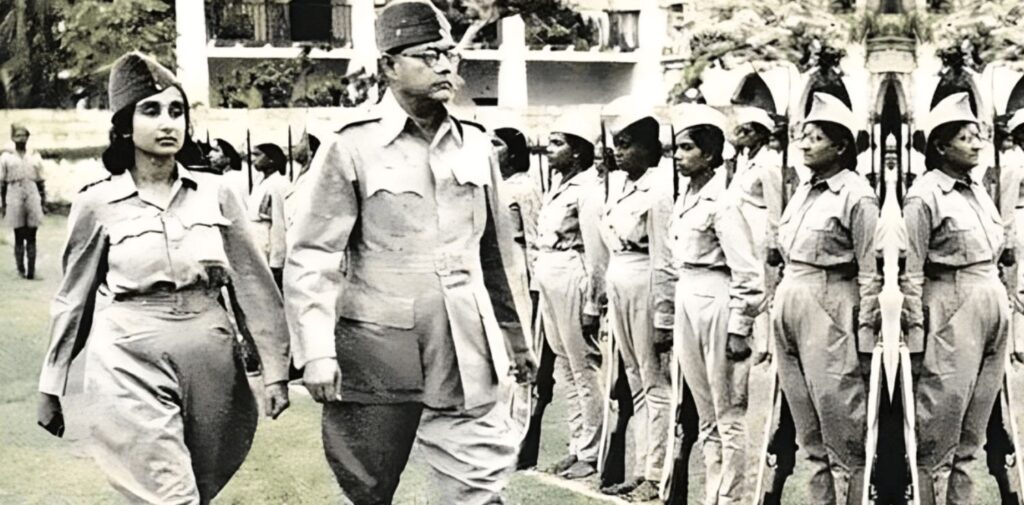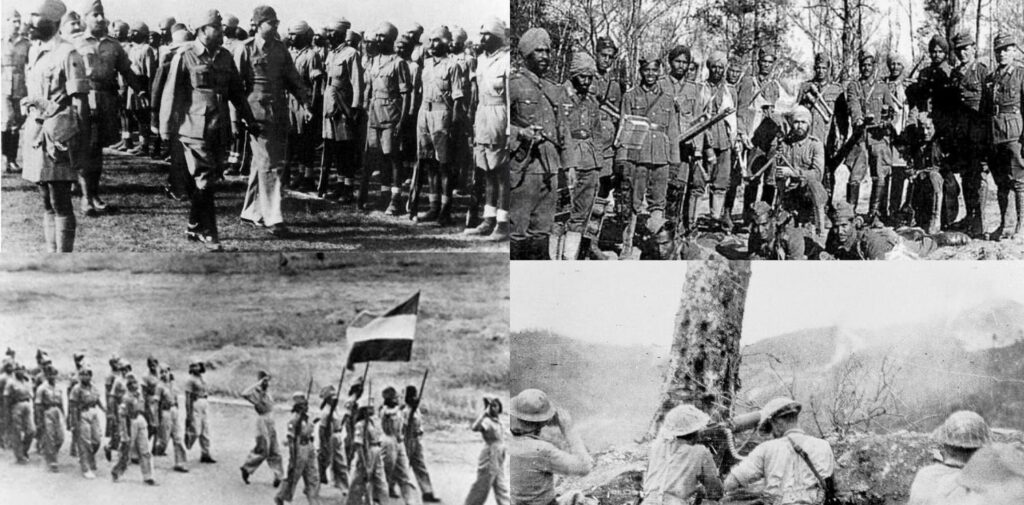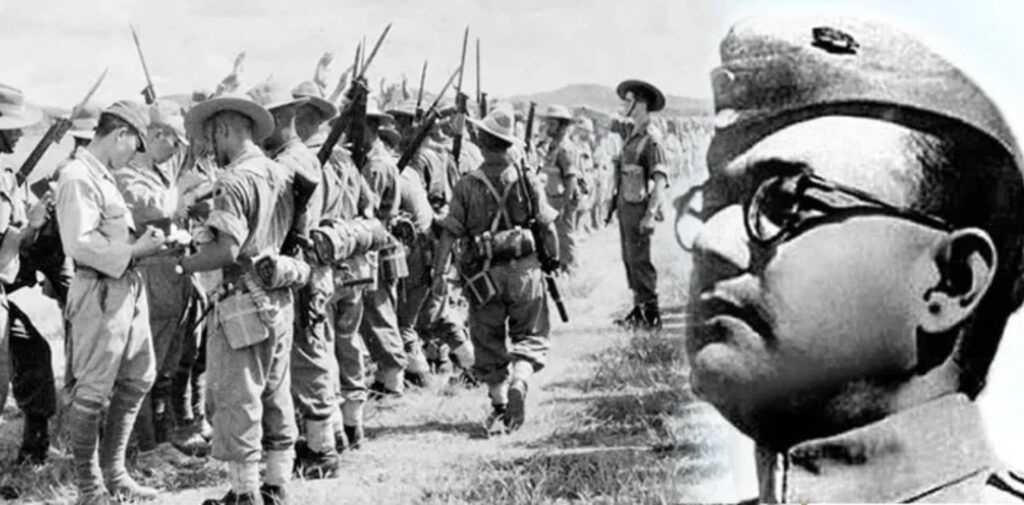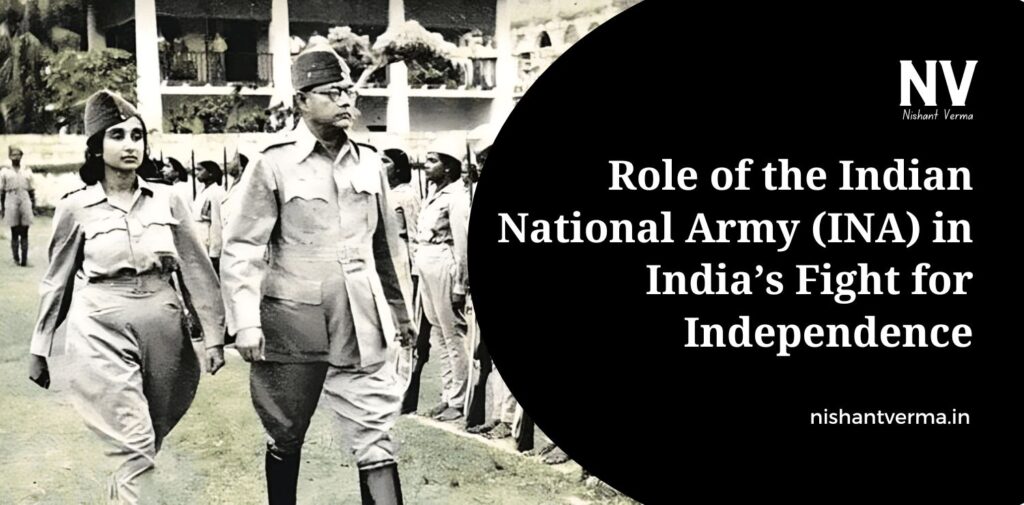India’s journey to independence from British rule was long and difficult, filled with many struggles, sacrifices, and moments of great courage. One of the most important and unique forces in this fight was the Indian National Army (INA). This army played a special role in India’s battle for freedom, especially during World War II. Let’s take a simple and detailed look at the Role of the Indian National Army, its formation, and its role in India’s fight for independence.
What Was the Indian National Army (INA)?
The Indian National Army was an army formed during World War II by Subhas Chandra Bose, one of the most important leaders of India’s independence movement. The INA was different from other Indian groups fighting for independence because it was made up of Indian soldiers who had been captured by the British during the war, along with Indian civilians who joined the army to fight for freedom.
At its heart, the INA was not just an army; it was a movement. It was a group of brave men and women who were ready to fight against British rule in India, hoping to bring independence to their homeland. The army was built with the belief that India would only be free if Indians themselves fought for it, rather than relying on other countries.

How Did the INA Begin?
The idea of the Indian National Army began with the efforts of Indian prisoners of war who were captured by the British during World War II. These soldiers, many of them Indian soldiers from the British army, were taken to Southeast Asia, where they came in contact with Subhas Chandra Bose.
Subhas Chandra Bose had been a well-known freedom fighter and a leader of the Indian National Congress, but he believed that the British could only be defeated with the help of military force. Bose sought help from Japan, which was fighting against the British during the war. In 1942, with the support of the Japanese, Bose formed the INA, which was initially called the Azad Hind Fauj (Indian National Army).
Bose was the leader and the driving force behind the INA. He believed that India’s freedom would come through struggle and sacrifice. His slogan, “Give me blood, and I will give you freedom,” inspired many Indians to join the army and fight for independence.
The Key Leaders of INA
The Indian National Army was led by Subhas Chandra Bose, but there were many other leaders who played important roles in the INA’s growth. Some of these leaders were Lal Singh, Shahnawaz Khan, and Dillip Singh. These leaders were determined to support Bose’s vision of a free India. They worked hard to recruit soldiers, train them, and prepare them for battle.
Another important leader was Captain Lakshmi Swaminathan, who became the first woman officer of the INA. She worked alongside Bose and contributed to the army’s success. Many women joined the INA, not just as soldiers but also as nurses, helping to support the troops during the difficult war.
The INA and its Role in India’s Freedom Struggle
The INA had a clear goal: to fight against the British and help India become independent. Though the INA didn’t win the battles they fought in, their efforts were extremely important in inspiring Indians all over the country to join the struggle for freedom.
The INA fought in battles in Southeast Asia, particularly in Burma (modern-day Myanmar). The army marched toward India from the east, hoping to free India from British rule. Even though the INA didn’t succeed in reaching India, their efforts inspired many people back home. The British realized that the Indian people were not going to stop fighting for their freedom.
The INA also played a major role in spreading the idea of “Azadi” (freedom). Bose’s speeches and leadership inspired millions of Indians. His determination showed people that India’s freedom could only come through unity and struggle, no matter how difficult the journey.

The Importance of INA’s Role in the Independence Movement
Although the INA did not win battles, its impact was significant. The British began to understand that India’s fight for freedom was not just about protests or talks—it was about real struggle and sacrifices. The INA made the British realize that Indians could be powerful opponents, and they could no longer hold India as a colony.
Subhas Chandra Bose’s leadership and the sacrifices made by the INA soldiers showed the world that India’s freedom was inevitable. The INA played a role in raising the spirits of Indians, giving them hope that they could one day be free.
INA and the Indian People’s Support
As the INA marched towards India, many people in India were inspired by the courage of these soldiers. People from all walks of life—students, workers, and even farmers—supported the INA’s cause. People in the cities and villages shouted slogans of “Jai Hind” (Victory to India) and “Inquilab Zindabad” (Long live the revolution).
The efforts of the INA helped to bring together different parts of India, as people realized that everyone needed to fight for freedom. Bose’s ideas of unity, strength, and courage became a rallying cry for the people, even after the INA was disbanded.
The INA Trials and Their Impact
After World War II, the British tried to stop the spread of the INA’s message by putting several INA officers on trial. These trials took place in 1945 and were meant to punish the soldiers for their actions during the war. However, instead of crushing the INA’s spirit, the trials made the movement even stronger.
During the trial, there were protests all over India. Many people were angry about how the British were treating their own countrymen. The trial was seen as unfair, and many Indians were ready to fight even harder for freedom.

The Legacy of the Indian National Army
Though the INA did not achieve its military objectives, its role in India’s fight for independence cannot be overlooked. The INA gave Indians the courage to keep fighting for their freedom. Subhas Chandra Bose’s leadership inspired people across the country, and the INA’s bravery showed that Indians were ready to take matters into their own hands.
In 1947, just two years after the INA trials, India became free. The INA was one of the key movements that helped to push the British out of India. Even though the INA did not succeed in military terms, its role in inspiring a nation to fight for its freedom was undeniable.
Conclusion: Role of the Indian National Army
The Indian National Army played an important role in India’s fight for independence. It showed that India’s freedom could not be taken lightly by the British, and that the people of India were ready to stand up for their rights. Subhas Chandra Bose’s leadership and the sacrifices of INA soldiers showed that India’s fight for freedom was about more than just a political struggle—it was about the hearts and minds of its people.
Today, we remember the Indian National Army not only for its military efforts but also for its role in inspiring millions of Indians to fight for a free India. The INA, though not successful in its military missions, was a symbol of courage, sacrifice, and patriotism. The brave men and women of the INA will always be remembered as heroes who helped lead India towards its long-awaited independence.




